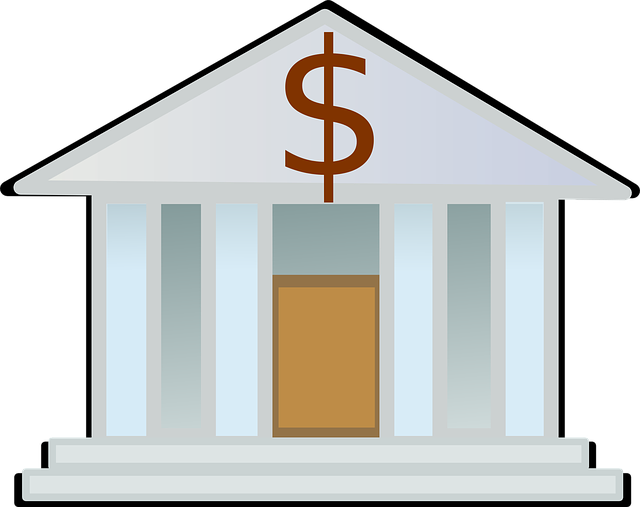When exploring loan options, it's crucial to understand traditional loan fees, including origination, processing charges, and annual percentage rates (APRs), as these can vary widely between lenders. The financial landscape has shifted towards alternative loans like peer-to-peer (P2P) lending, which offer lower fees and flexible interest rates but may have complex fee structures and lack regulation. Key factors influencing loan interest include creditworthiness, loan amount, and repayment period, with traditional loans typically featuring fixed rates while alternatives offer variable rates subject to market changes. Borrowers must carefully review terms and conditions to balance potential savings against increased costs, managing flexibility and avoiding challenging repayments to align with financial goals.
In today’s financial landscape, understanding alternative loan costs versus traditional lending is crucial. With the rise of non-bank lenders and digital platforms offering flexible options, borrowers are presented with diverse choices. This article explores comprehensive aspects of loan fees, delving into traditional structures and the evolving world of alternative loans. We analyze interest rate influences, dissect alternative cost models, and weigh the benefits and drawbacks to empower informed lending decisions. Discover insights on navigating this dynamic financial arena.
- Understanding Traditional Loan Fees: A Comprehensive Overview
- The Rise of Alternative Loans: What Are They and How Do They Differ?
- Deciphering Loan Interest Rates: Factors Influencing Costs
- Exploring Alternative Loan Cost Structure: A Detailed Analysis
- Benefits and Drawbacks: Weighing the Pros and Cons
- Making Informed Decisions: Tips for Evaluating Lending Options
Understanding Traditional Loan Fees: A Comprehensive Overview

When considering loan options, understanding traditional loan fees is a crucial step in making an informed decision. Traditional lending institutions typically charge a variety of fees throughout the loan lifecycle, from origination and processing charges to annual percentage rates (APRs) reflecting the cost of borrowing money. These costs can vary significantly between lenders and often include hidden fees that add up over time.
Origination fees, for instance, are one-time charges levied at the start of the loan process to cover administrative costs. Processing fees, on the other hand, might be charged to compensate for the work involved in reviewing and approving a loan application. Interest rates, expressed as an annual percentage, represent the cost of borrowing money over a year. Traditional loans often come with fixed interest rates, meaning they remain constant throughout the loan term, providing borrowers with predictable monthly payments. However, variable interest rates can adjust periodically, leading to potential savings or increased costs depending on market conditions.
The Rise of Alternative Loans: What Are They and How Do They Differ?

In recent years, the financial landscape has witnessed a significant shift as alternative loans have emerged as a popular option for borrowers beyond traditional banking channels. These non-conventional lending sources offer a fresh approach to financing, catering to diverse needs and often providing more flexible terms. As a result, many individuals are turning away from conventional bank loans towards these new alternatives, driven by their unique benefits.
Alternative loans, such as peer-to-peer (P2P) lending, online lenders, and crowdfunding platforms, have distinct characteristics that set them apart from traditional banking. They typically involve lower loan fees and more adaptable interest rates, appealing to borrowers seeking competitive pricing. Unlike bank loans, these alternatives often have faster approval processes, enabling quick access to funds. This shift is partly due to the digital transformation of lending, allowing for efficient, technology-driven transactions, and offering a more personalised experience to loan seekers.
Deciphering Loan Interest Rates: Factors Influencing Costs

Understanding loan interest rates is a crucial step in comparing alternative loans to traditional lending methods. Loan fees and interest are determined by several factors that can significantly impact overall costs. One key factor is the creditworthiness of the borrower, with stronger credit scores often securing lower interest rates. Traditional lenders like banks typically offer fixed rates, making it easier to budget but offering less flexibility if market conditions change.
In contrast, alternative loans, especially those from online platforms, may offer more variable interest rates. These rates can be influenced by factors such as the loan amount, repayment period, and the lender’s own risk assessment. While this variability might lead to higher costs in some cases, it also allows for potential savings if market rates drop during the loan term. Borrowers should carefully review the terms and conditions of each loan option to fully grasp how these factors could affect their financial obligations.
Exploring Alternative Loan Cost Structure: A Detailed Analysis

When considering alternative loans, understanding their cost structure is essential. Unlike traditional lending, which often has straightforward interest rates and fees, alternative loan costs can be more complex. These loans may charge a combination of origination fees, service fees, and variable or fixed interest rates. Origination fees, typically a percentage of the loan amount, cover administrative costs and are often non-negotiable. Service fees, on the other hand, can vary and are usually tied to specific events like prepayment or late payment.
Loan interest with alternative lenders can be more dynamic. Some offer competitive fixed rates, while others opt for variable rates linked to market indices. Variable rates might seem appealing initially due to lower starting points but carry the risk of increasing over time. Detailed analysis of these cost components is crucial for borrowers to make informed decisions, comparing them against traditional loan offers and assessing the overall financial impact.
Benefits and Drawbacks: Weighing the Pros and Cons

Alternative loans, often praised for their accessibility and flexibility, come with unique sets of benefits and drawbacks when compared to traditional lending methods. One significant advantage is that they may have lower loan fees and more transparent pricing structures, allowing borrowers to better understand their repayment costs upfront. This clarity can empower individuals to make informed financial decisions. Moreover, alternative lenders often cater to a broader range of borrowers, including those with less-than-perfect credit, by offering different types of loans tailored to individual needs.
However, these loans may also carry higher loan interest rates and stricter terms, potentially leading to greater long-term financial burden for borrowers. The lack of regulation in the alternative lending space can result in hidden fees and unpredictable terms that might not be as favorable as traditional loans. Additionally, while flexibility is a plus, it can also make repayment more challenging if not managed properly. Borrowers should carefully consider these factors before opting for an alternative loan to ensure they are making a decision that aligns with their financial goals and capabilities.
Making Informed Decisions: Tips for Evaluating Lending Options

When considering lending options, making an informed decision requires a thorough evaluation of various factors, especially when it comes to alternative loans versus traditional ones. It’s essential to understand that each type of loan has its own set of costs and interests. For instance, while traditional loans often have fixed interest rates, alternative loans may offer more flexible terms but could also come with higher variable rates.
Evaluating loan fees is crucial. Alternative lenders might charge different types of fees, such as origination or processing fees, which can impact the overall cost of borrowing. Additionally, understanding the loan term and repayment schedule is vital. Longer repayment periods may lower monthly payments but increase the total interest paid over time. Therefore, borrowers should carefully consider their financial capabilities to repay the loan within a reasonable timeframe.






